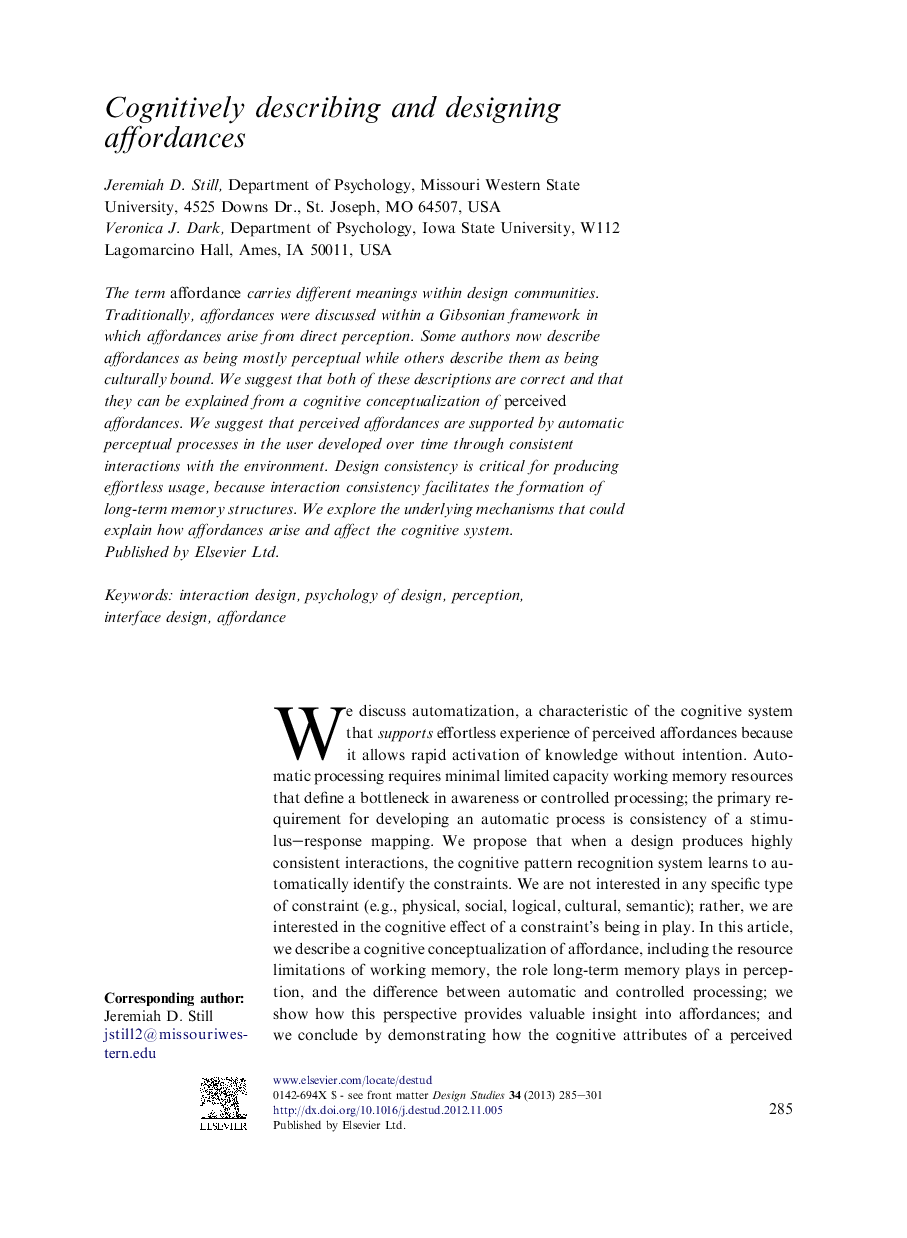| Article ID | Journal | Published Year | Pages | File Type |
|---|---|---|---|---|
| 261661 | Design Studies | 2013 | 17 Pages |
The term affordance carries different meanings within design communities. Traditionally, affordances were discussed within a Gibsonian framework in which affordances arise from direct perception. Some authors now describe affordances as being mostly perceptual while others describe them as being culturally bound. We suggest that both of these descriptions are correct and that they can be explained from a cognitive conceptualization of perceived affordances. We suggest that perceived affordances are supported by automatic perceptual processes in the user developed over time through consistent interactions with the environment. Design consistency is critical for producing effortless usage, because interaction consistency facilitates the formation of long-term memory structures. We explore the underlying mechanisms that could explain how affordances arise and affect the cognitive system.
► A cognitive theory of affordance is presented. ► The cognitive attributes associated with affordances are described. ► A description of how affordances are formed in long-term memory is provided. ► The relationship between design conventions and affordances is clarified. ► A disconnect between a design and previous user knowledge may cause phantom affordances.
